Photography courtesy of Lowell Washburn, all rights reserved.
The 2014 reinstatement of the Iowa teal season is the best single change of waterfowl regulations in the past half century. For thousands of Iowans who participated in the September 1st teal season opener, the credibility of that statement was more than obvious. Although much of the state was blanketed by heavily overcast skies, fog, and precipitation that ranged from light drizzle to frog-strangling downpours; the adverse weather appears to have done little to dampen hunter success. Most parties bagged their fair share of teal; many left the marshs with six bird limits. Social media was alive with photo postings; like the one showing a group of ten hunters displaying their neatly arranged limit of 60 blue-winged teal. Teal were plentiful enough that, by day’s end, I had three separate nonhunters [all who lived within earshot of public wildlife areas] ask me what in the world all the shooting was about.
I celebrated the season kickoff by visiting a popular public wildlife area where I snuggled into some thick cattails on a small pothole. By small, I mean that an average high school pitcher could easily peg a baseball across the wetland’s widest point. Although small in stature, the puddle contained everything a migrating blue-wing could wish for – six-foot-tall cattails for security, shallow water for dabbling, and an endless supply of food. The wetland’s oozy mud bottom is a treasure store of rice cut grass and smartweed seeds deposited during previous times of drought. For migrating teal, the pothole is like pulling off the interstate and finding a service station, motel, and great restaurants all in the same spot.
Despite its diminutive size and lack of boat access, such areas are highly prized by teal minded duck hunters. If you want to secure such a spot, it’s best to get there early. With that thought in mind, I hoisted my decoys and set out from the public parking lot at the stroke of twelve-midnight. Before long I had a fashioned a makeshift blind in the cattails and had tossed my two dozen plus teal decoys out front. Settling in, it was a good feeling to have the spot I’d hoped for. All I had to do now was wait for legal shooting time which, unfortunately, lay more than six hours into the future.
One by one, the minutes crawled by. Upon waking from one of several short cat naps, I could discern that the darkness was beginning to fade. It was still too dark to see any ducks, but the occasional whistle of wings provided ample optimism for things to come. I would have much preferred to enjoy the wonders a starry night; but the drizzle persisted, punctuated by short bursts of steady rainfall.
As legal shooting time drew closer, bunches of teal began to suddenly descend on the tiny pond. Appearing as dark silhouettes, the ducks arrived in pairs, trios, and in groups numbering up to ten or twelve. I was delighted as each and every flock splashed directly into the decoys. Some ducks began preening their feathers while others stood on their tails and scoured the marsh bottom for seeds. New arrivals were greeted by birds already on the water; the high pitched – keck, keck, keck, keck – of blue-wing hens filled the air.
The show continued until, at long last, sunrise shooting time finally arrived. There was an audible rush of wings as more ducks skimmed low over the cattails. The waiting was over. It was time to collect the principal ingredient for one the best game dinners on earth.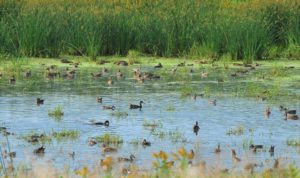
Blue-winged teal are the easiest of all waterfowl to lure to decoys. Adhering to the long-standing tradition of their species, the incoming flocks were willing participants. Once the shooting started it became a fast and furious, load and shoot event. I was carrying my favorite shotgun, a lightweight Ruger 28-gauge stoked with 5/8-ounce loads of steel 6s. In what seemed to pass in a blur of activity, I managed to down six fat blue-wings in six minutes — an instant payoff to an hours’ long wait.
Carefully placing the birds atop a clump of vegetation, I quickly went from shooter to birder. Pouring a full cup of coffee, I sat back as more teal piled in. The feathery parade continued as mallards, wood duck, swallows, and a single green heron made their entrance. Ten feet to the rear, a sora rail sounded a loud whinny from inside the cattails.
Before long, the daybreak drizzle had returned to steady rain; heavy enough now that it made the water dance around the decoys. The party was over. I sat in the rain for another half hour, but never saw another bird of any kind. Although soaked to the bone, I couldn’t have been happier.
After picking up my decoys, I soon learned that I wasn’t the only Happy Camper. According to DNR Conservation Officers, teal hunters reported phenomenal success statewide. For many hunters, this was one duck season opener where results actually exceeded expectations. The reinstatement of the Iowa teal season is best single change in waterfowl regs in the past 50 years.

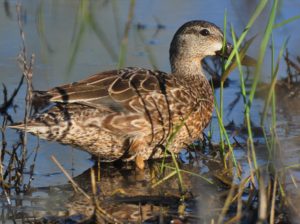
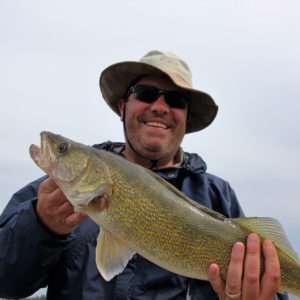 Tom Cope
Tom Cope Sue Wilkinson
Sue Wilkinson Susan Judkins Josten
Susan Judkins Josten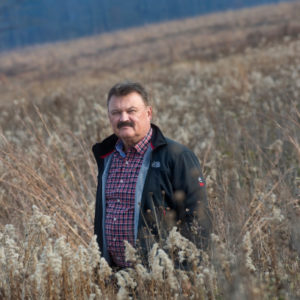 Rudi Roeslein
Rudi Roeslein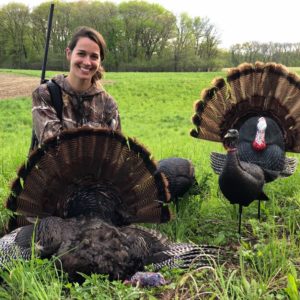 Elyssa McFarland
Elyssa McFarland Mark Langgin
Mark Langgin Adam Janke
Adam Janke Joe Henry
Joe Henry Kristin Ashenbrenner
Kristin Ashenbrenner Joe Wilkinson
Joe Wilkinson Dr. Tammy Mildenstein
Dr. Tammy Mildenstein Sean McMahon
Sean McMahon